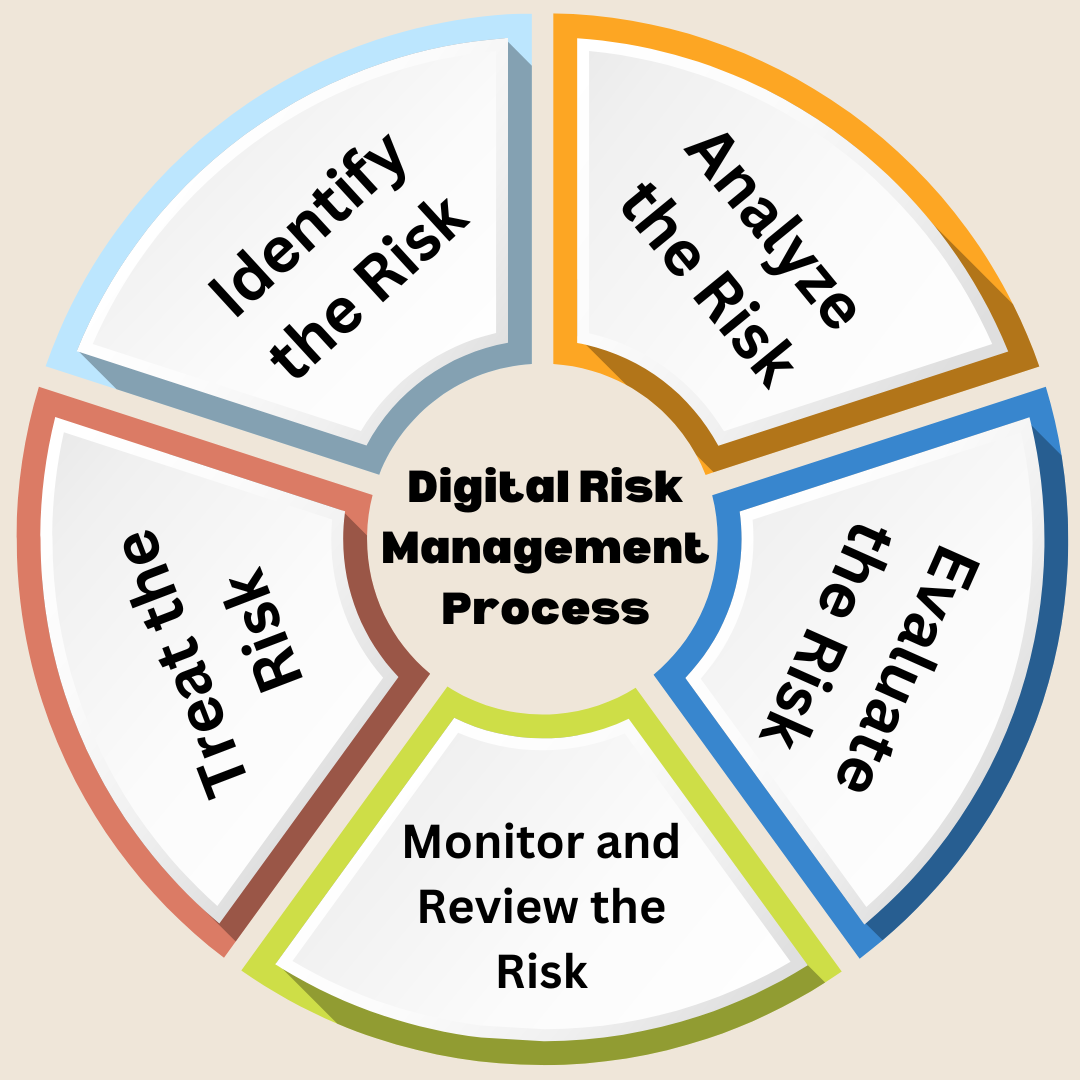Risk Management Process
This process helps to ensure that all potential risks are taken into account and that potential solutions are implemented in a timely manner. It also ensures that risks are monitored and that potential changes to the risk can be identified and addressed. This allows the team to stay ahead of any potential risks and create proactive solutions that can be implemented quickly and efficiently. It helps to create a safer and more secure environment for the team and its stakeholders.
Here Are The Five Essential Steps of A Risk Management Process
- Assess the potential impact of the risk to create a plan of action.
- Identify potential risks and evaluate their impact on the organization.
- To ensure that the right decisions are made, it is important to accurately assess and prioritize the risks.
- Identify and implement strategies to mitigate the risk.
- To ensure success, it is important to assess and adjust the risk parameters regularly.

Step 1: Assess the potential impact of the risk to create a plan of action.
This makes it easier to track the progress of risk management in the organization and to make sure that any new risks are identified and addressed quickly.
There are many different types of risks:
- Legal risks
- Environmental risks
- Market risks
- Regulatory risks etc.
It also allows all stakeholders to participate in the risk management process, as they can be more aware of potential risks and can provide input on how to best address them. This helps to ensure that risks are managed in a timely and effective manner, and that resources are allocated to the risks that pose the greatest threat. Ultimately, this contributes to a culture of risk management that is proactive and preventative.
Step 2: Identify potential risks and evaluate their impact on the organization.
This allows you to quickly identify potential risks and their impact on different areas of the business, instead of having to manually analyze each risk and its potential effects. By having a mapped risk management framework in place, you can identify and address risks in a timely manner, which helps minimize disruption and maximize efficiency. This also allows for better communication and collaboration between teams, as everyone can be on the same page when it comes to risks and their management. Furthermore, this helps to build a culture of trust and accountability, making it easier to work together on mitigating risks.
Step 3: To ensure that the right decisions are made, it is important to accurately assess and prioritize the risks.
This ensures that the business can quickly identify which risks are the most serious and take appropriate steps to mitigate them. This can help to reduce the potential for losses and help the business to stay profitable. It also allows the business to identify opportunities for growth and expansion, and to take advantage of them quickly and efficiently. Moreover, the business can use the process to identify areas that need improvement and develop strategies to address them.
Step 4: Identify and implement strategies to mitigate the risk.
Every risk needs to be eliminated or contained as much as possible. This is done by connecting with the experts of the field to which the risk belongs. In a manual environment, this entails contacting each and every stakeholder and then setting up meetings so everyone can talk and discuss the issues. The problem is that the discussion is broken into many different email threads, across different documents and spreadsheets, and many different phone calls. In a risk management solution, all the relevant stakeholders can be sent notifications from within the system. The discussion regarding the risk and its possible solution can take place from within the system. Upper management can also keep a close eye on the solutions being suggested and the progress being made within the system. Instead of everyone contacting each other to get updates, everyone can get updates directly from within the risk management solution.
Step 5: To ensure success, it is important to assess and adjust the risk parameters regularly.
This is important because it allows organizations to quickly identify potential threats and take steps to mitigate them before they become an issue. It also allows them to track trends and identify patterns in their risk management system that could indicate potential issues down the line. Additionally, it can help organizations identify areas where they might need to invest more resources in order to reduce their risks. Having this insight can help organizations develop more effective risk management strategies and ensure that they are adequately prepared to handle any potential risks. It can also help them allocate resources more efficiently and ensure that they are taking all the necessary steps to protect their business.
Benefit of Risk Management
Having a clear risk management process helps to ensure that team members understand when an escalation is necessary and how it should be handled. This eliminates confusion and reduces the likelihood of mistakes being made during the escalation process. This allows the team to respond quickly and efficiently to any potential risks, reducing the potential for further damage or loss. Having a well-defined risk management process in place also helps to ensure compliance with regulatory standards.
Where to contact us :
Website : www.forextrade1.co
Twitter : www.twitter.com/forextrade11
Telegram : telegram.me/ftrade1
Facebook : www.facebook.com/Forextrade01
Instagram : www.instagram.com/forextrade1
YouTube : www.youtube.com/ForexTrade1
Skype : forextrade01@outlook.com
Email ID : info.forextrade1@gmail.com
Discord : https://discord.gg/vEk98ZvrHP
LinkedIn : https://www.linkedin.com/company/forextrade11

